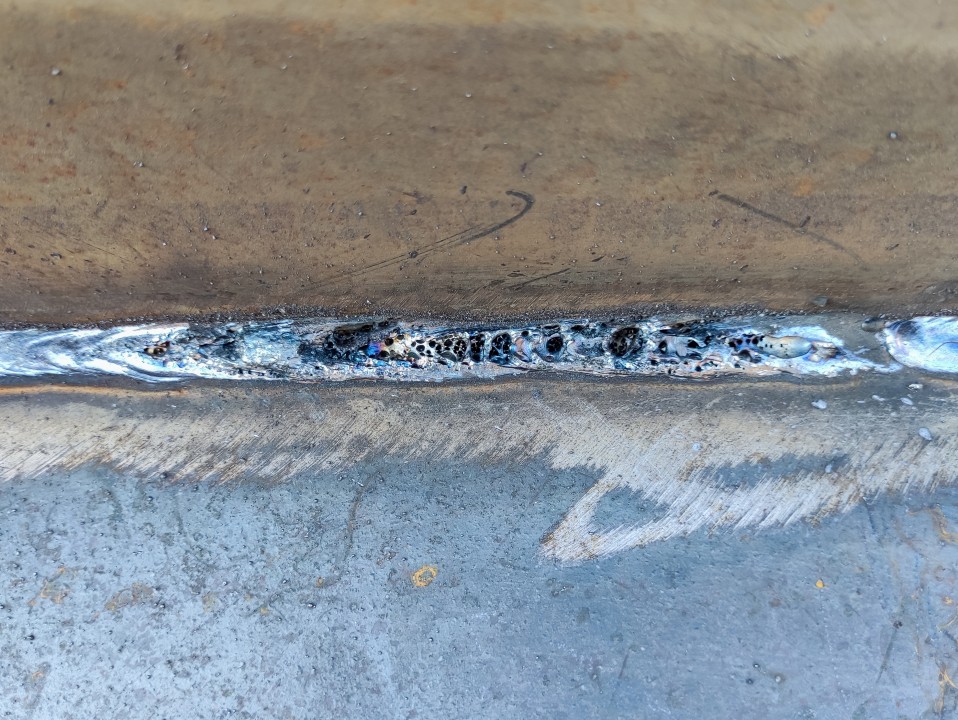Porosity in Welding: Identifying Common Issues and Implementing Finest Practices for Avoidance
Porosity in welding is a prevalent concern that commonly goes unnoticed until it creates substantial issues with the stability of welds. This common defect can endanger the toughness and toughness of welded structures, posing safety threats and bring about expensive rework. By understanding the origin of porosity and executing effective avoidance methods, welders can considerably improve the top quality and integrity of their welds. In this conversation, we will check out the key variables contributing to porosity formation, analyze its damaging impacts on weld efficiency, and review the very best techniques that can be taken on to minimize porosity incident in welding processes.
Typical Sources Of Porosity

Using filthy or damp filler products can introduce pollutants right into the weld, adding to porosity problems. To alleviate these typical causes of porosity, thorough cleaning of base steels, appropriate securing gas choice, and adherence to optimum welding parameters are essential practices in attaining top quality, porosity-free welds.
Influence of Porosity on Weld Top Quality

The existence of porosity in welding can substantially jeopardize the structural integrity and mechanical residential or commercial properties of welded joints. Porosity creates spaces within the weld steel, damaging its total toughness and load-bearing ability. These gaps function as stress and anxiety concentration points, making the weld much more vulnerable to breaking and failure under used tons. In addition, porosity can minimize the weld's resistance to rust and other environmental elements, better lessening its long life and performance.
Welds with high porosity degrees have a tendency to show lower influence stamina and lowered capability to flaw plastically before fracturing. Porosity can hamper the weld's capability to successfully transfer forces, leading to premature weld failure and possible safety and security threats in essential frameworks.
Finest Practices for Porosity Avoidance
To enhance the architectural stability and high quality of welded joints, what specific measures can More Help be applied to decrease the incident of porosity during the welding process? Porosity avoidance in welding is critical to make certain the honesty and stamina of the final weld. One effective technique is appropriate cleaning of the base steel, eliminating any contaminants such as corrosion, oil, paint, or moisture that can cause gas entrapment. Ensuring that the welding tools is in good problem, with clean consumables and ideal gas flow prices, can likewise considerably lower porosity. Furthermore, maintaining a secure arc and managing the welding parameters, such as voltage, existing, and travel rate, assists develop a constant weld swimming pool that lessens the threat of gas entrapment. Utilizing the correct welding method for the specific material being welded, such as readjusting the welding angle and gun placement, can even more protect against porosity. Regular examination of welds and immediate removal of any kind of problems recognized during the welding process are essential techniques to avoid porosity and generate high-quality welds.
Significance of Appropriate Welding Methods
Applying correct welding strategies is paramount in ensuring the architectural integrity and quality of bonded joints, building on the structure of efficient porosity avoidance measures. Welding techniques straight influence the total toughness and toughness of the bonded framework. One crucial element of appropriate welding techniques is maintaining the correct heat input. Too much warmth can cause boosted porosity because of the entrapment of gases in the weld pool. Alternatively, not enough warm may result in insufficient blend, producing prospective powerlessness in the joint. Additionally, making use of the proper welding specifications, such as voltage, current, and take a trip rate, is important for achieving audio welds with very little porosity.
In addition, the option of welding procedure, whether it be MIG, TIG, or stick welding, ought to straighten with the particular needs of the job to guarantee optimum results. Correct cleaning and prep work of the base steel, as well as choosing the right filler product, are also visit the site necessary components of efficient welding techniques. By adhering to these ideal practices, welders can lessen the risk of porosity development and generate top quality, structurally sound welds.

Evaluating and Quality Assurance Steps
Testing procedures are important to discover and stop porosity in welding, making certain the toughness and durability of the final product. Non-destructive testing techniques such as ultrasonic testing, radiographic testing, and visual evaluation are typically utilized to determine prospective problems like porosity.
Post-weld inspections, on the various other hand, assess the final weld for any kind of problems, consisting of porosity, and confirm that it satisfies specified requirements. Applying an extensive top quality control plan that consists of thorough testing treatments and inspections is vital to reducing porosity problems and making sure the overall high quality of bonded joints.
Conclusion
In final thought, porosity in welding Read Full Report can be an usual concern that impacts the high quality of welds. By identifying the common sources of porosity and executing finest techniques for prevention, such as correct welding techniques and testing procedures, welders can make certain top quality and reputable welds. It is vital to focus on prevention methods to decrease the event of porosity and preserve the integrity of bonded frameworks.
Comments on “Discover What is Porosity in Welding and Its Effect on Structural Integrity”